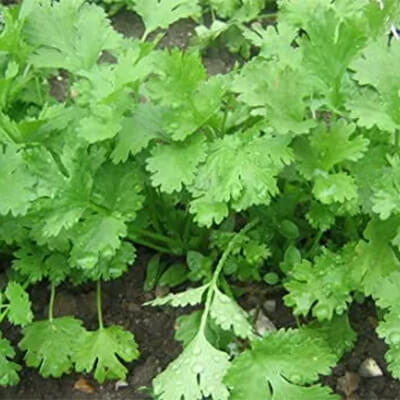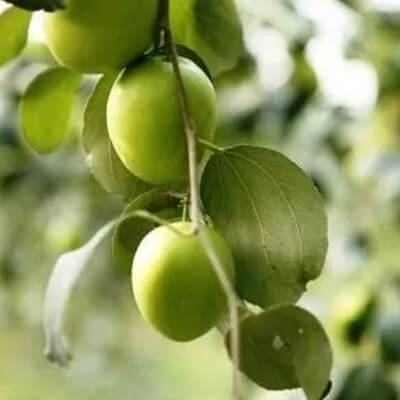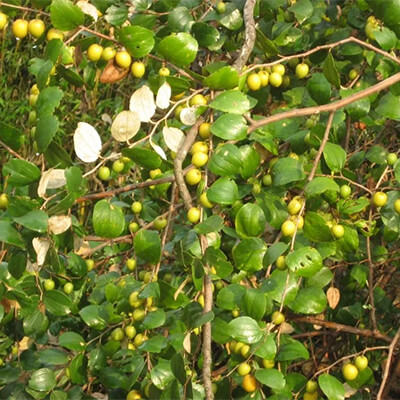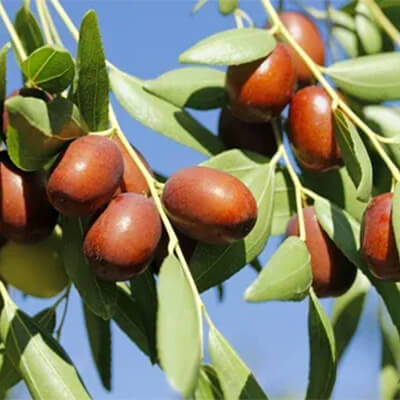On This Page
Dhanyaka – Culinary as well as Traditional Medicine
Introduction
Dhanyaka is well recognized throughout the world due to its culinary uses as well as traditional medicine in a variety of conditions. Coriandrum sativum is a Hollow stanched small herb that belongs to the family Apiaceae. Different active principles have been identified in each part of the plant like roots, fruits, seeds, etc due to which it exhibits anti-inflammatory, anti-cancer, and autonomic induction relaxation effects. Terpene alcohol “Linalool” is the main constituent of Dhanyaka which serves most therapeutic uses like neuroprotective, analgesic, anti-convulsant, etc. Dhanyaka is innate to South-Eastern Europe, but it is heavily cultivated throughout the world.
Basonym of Dhanyaka
धान्याकार फलत्वात।
Dhanyaka is a plant having seeds like cereals.
Main Synonyms of Dhanyaka
- According to morphology
सूक्ष्मपत्रः – ह्यस्वनी पत्राण्यास्य।
The leaves of Dhanyaka are small.
कुनटी – कौ भूमौ नटति नृत्यतीव हरीतौषधि: ।
Dhanyaka is a very small green plant that looks like dancing when the wind blows.
छत्रधान्यम – छत्राकारपुष्पव्यूहयुक्तं धान्यं।
Dhanyaka has umbel inflorescence.
छत्रा- छत्राकारपुष्पव्यूहत्वात।
Dhanyaka is having umbel inflorescence.
कुस्तुंबरू – कुत्सितं तुंबरू तुम्बुरवाकारम फलं।
Fruits of Dhanyaka resemble Tumbru.
धान्यबीज – धान्यवद बीजमस्य।
Dhanyaka seeds resemble cereals.
- According to properties and action
वितुन्नक – विगतम तुन्नमस्मात व्याधिनाशकत्वात।
Dhanyaka is used to treat many diseases.
वेषणाग्र्या – वेषणेषु भोज्यसंस्कारक द्रव्येषु श्रेष्ठा।
Dhanyaka is one of the best spices kept in the kitchen.
शाक योग्य – शाके प्रयुक्त: ।
Stem and leaves are used for food preparation.
धेनुका – धीयते इति।
Fruit powder is added to the drinks.
हृद्यगंधा – हृद्य गन्धो अस्य।
Dhanyaka has an agreeable odor.
Regional Names of Dhanyaka
- Coriander (English)
- Dhania (Hindi)
- Kottambari (Kannada)
- Kottampalari (Malayalam)
- Kothimbir (Marathi)
- Dhane (Bengali)
- Dhana (Gujarati)
- Katamalli (Tamil)
- Daniyalu (Telugu)
- Kujjar (Arab)
- Kasnij (Pers.)
- Sabit Dhania (Pakistan)
More Names – Cilantro
Botanical Name
Coriandrum sativum Linn.
In the word, Coriandrum “corys” means helmet, and “drum” means anthers.
Sativum word means cultivated.
Family
Apiaceae (Satpuspa Kula)
Ayurvedic Reference of Dhanyaka (Coriandrum Sativum)
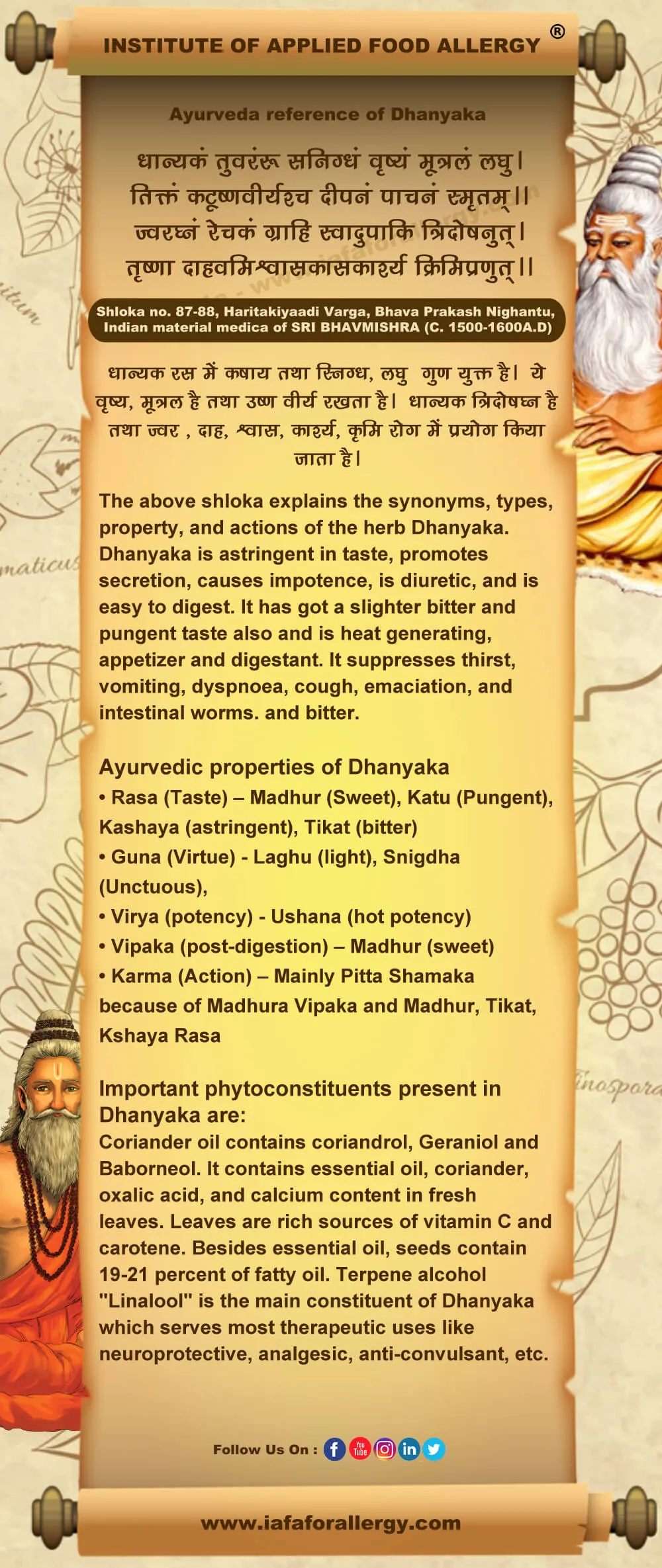
Scientific Classification of Dhanyaka
| Kingdom | Plantae |
| Class | Dicotyledons |
| Subclass | Polypetalae |
| Series | Calyciflorae |
| Order | Umbellales |
| Family | Apiaceae |
| Genus | Coriandrum |
| Species | Sativum |
Classification of Dhanyaka as per Charaka and Sushruta
- Charaka: Trishna Nigrehana Mahakshaya, Sheet Prashmana Mahakshaya
- Sushruta: Guduchyadi Gana
Dhanyaka Description in Brihtrayi
| Charaka | Shusruta | Vagbhata (Ashtang Hridya) |
| C. S. Su. 3/ 7 | S. S. Chi. 5/ 28 | A. H. Su. 14/ 25 |
| C. S. Su. 4/ 29, 42 | S. S. Chi. 38/ 66 | A. H. Su. 17/ 2 |
| C. S. Su. 23/ 19 | S. S. U. 39/ 151 | A. H. Su. 19/ 33 |
| C. S. Su. 170, 302 | S. S. U. 40/ 36, 90, 114 | A. H. Sa. 2/ 7 |
| C. S. Chi. 2.1/ 42, 2.4/ 16, 19, 21 | S. S. U. 42/ 25, 27 | A. H. Chi. 1/ 26, 77, 139 |
| C. S. Chi. 3/ 183, 267 | S. S. U. 47/ 30, 35 | A. H. Chi. 3/ 4, 115, 142, 144 |
| C. S. Chi. 5/ 66, 70, 75, 80, 86 | S. S. U. 52/ 13, 38 | A. H. Chi. 5/ 13, 56 |
| C. S. Chi. 8/ 70, 137, 142 | A. H. Chi. 6/ 8, 13, 82 | |
| C. S. Chi. 11/ 86, 88 | A. H. Chi. 7/ 17, 44 | |
| C. S. Chi. 12/ 54, 64 | A. H. Chi. 8/ 45, 76, 86, 146 | |
| C. S. Chi. 13/ 109, 124 | A. H. Chi. 9/ 6, 12, 34, 50, 111,114 | |
| C. S. Chi. 14/ 73, 90, 104, 107, 111, 126, 130 | A. H. Chi. 10/ 46 | |
| C. S. Chi. 15/ 143 | A. H. Chi. 14/ 9, 17, 21, 31, 60 | |
| C. S. Chi. 16/ 44 | A. H. Chi. 15/ 14, 49 | |
| C. S. Chi. 18/ 35, 112 | A. H. Chi. 16/ 2 | |
| C. S. Chi. 19/ 23, 29, 43, 47, 110 | A. H. Chi. 17/ 23 | |
| C. S. Chi. 20/ 23, 24, 31 | A. H. Chi. 18/ 11 | |
| C. S. Chi. 22/ 60 | A. H. Chi. 19/ 65 | |
| C. S. Chi. 23/ 95 | A. H. Ka. 1/ 39 | |
| C. S. Chi. 24/ 127, 129, 181 | A. H. Ka. 2/ 17 | |
| C. S. Chi. 26/ 95 | A. H. Ka. 3/ 28 | |
| C. S. Ka. 4/ 14 | A. H. Ka. 6/ 6 | |
| C. S. Ka. 7/ 39, 52 | A. H. U. 30/ 12 | |
| C. S. Si. 3/ 64 | ||
| C. S. Si. 4/ 42 | ||
| C. S. Si. 6/ 52 |
Kustumbru (Synonym of Dhanyaka)
| Charaka | Sushruta | Vagbhata (Ashtanga Hridya) |
| C. S. Vi. 7/ 17 | S. S. Su. 38/ 50 | A. H. Chi. 1/ 62 |
| C. S. Vi. 8/ 143, 149, 158 | S. S. Su. 46/ 231 | A. H. U. 32/ 3 |
| C. S. Chi. 7/ 122 | S. S. Sa. 10/ 22 | |
| C. S. Chi. 14/ 107 | S. S. Chi. 17/ 4 | |
| C. S. Ka. 1/ 26 | S. S. Chi. 20/ 37 | |
| S. S. Ka. 6/ 19 | ||
| S. S. U. 39/ 170 | ||
| S. S. U. 49/ 30 |
Aadrika (fresh plant of coriander) – A.H. Su. 6/ 109, A. H. Chi. 7/ 15, A. H. Chi 8/ 82
Vittunak (synonyms of coriander) – C. S. Chi. 18/ 175, C. S. Chi. 29/ 93, A. H. Chi 22/ 44
External Morphology of Coriandrum Sativum (Dhanyaka)
- Habit: Annual herb.
- Root: Taproot, branched.
- Stem: Herbaceous, erect, Cylindrical, fistular, ribbed, branched, glaucous with swollen nodes, and aromatic.
- Leaves: leaves of coriander are alternate, exstipulate, petiolate with sheathing leafy base. Coriander leaves are very much dissected when matured, leaflets are 2-3 lobed with acute apex and unicostate reticulate venation.
- Inflorescence: Compound umbel, primary umbel with an involucre of bracts at the base, the secondary umbels also with a similar involved of bracteoles.
- Flowers: The outer flowers of the coriander are with large and unequal petals. The central ones are smaller with equal petioles. Flowers of coriander are bracteate, pedicellate, complete, bisexual, pentamerous, and epigynous. Outer flowers are zygomorphic, central ones are actinomorphic and purplish – white. Sepals are 5 gamosepalous and calyx tubes adnate to the ovary wall. Petals are 5, polypetalous with imbricate aestivation. Androecium of Dhanyaka contains 5 stamens that are polyandrous, alternating with the petals with long filaments. The gynoecium of Dhanyaka is carpellary syncarpous, with inferior ovary axile placentation without style.
- Fruit: Cremo carp, oblong, ridged. Fruit breaks up into 2 Mericarps, one seed in each mericarp, Vittae is present in the pericarp.
- Seed: Endospermic
Flowering and fruiting time
Flowering and fruiting of Dhanyaka occur between the Autumn to spring seasons.
Varieties of Dhanyaka
- Gramya (Cultivated)
- Vanya (Wild)
Distribution of Dhanyaka
Dhanyaka is innate to Southeastern Europe and globally it is distributed in Greece, Europe, India, Pakistan, North Africa, China, West Asia, the Middle East, Egypt, etc.
It is cultivated throughout India. It is under crop farming on a commercial as well as domestic scale for the production of fruits being a major spice.
The Useful Part of Dhanyaka
The useful part of Dhanyaka is the whole plant (Panchang), leaves, and fruit.
Important Phytoconstituent of Dhaynaka
Fresh and green plants have 84 percent moisture. Fruits contain a volatile oil of 1 percent, fixed oil- of 13 percent, fat- of 13 percent, mucilage, tannin, malic acid, and alkaline of 5 percent. Coriander oil contains coriandrol, Geraniol and Baborneol. It contains essential oil, coriandrol, oxalic acid, and calcium content in fresh leaves. Leaves are rich sources of vitamin C and carotene. Besides essential oil, seeds contain 19-21 percent of fatty oil. Terpene alcohol “Linalool” is the main constituent of Dhanyaka which serves most therapeutic uses like neuroprotective, analgesic, anti-convulsant, etc.
Recent Research on Dhanyaka
- Anti-inflammatory
- Neuroprotective
- Analgesic
- Anticonvulsant
- Anticancer
- Autonomic induction relaxation
- Antioxidant
- Antifungal
- Antidiabetic
Rasa-Panchaka (Properties) of Adra Dhanyaka (Fresh coriander)
| Rasa (Taste) | Madhur (Sweet), Katu (Pungent), Tikat (Bitter), Kashaya (Astringent) |
| Guna (Virtue) | Laghu (light), Snigadh (oily) |
| Virya (potency) | Ushana (hot potency) |
| Vipaka (post-digestion) | Madhur (Sweet) |
| Dosha Karma (action on Dosha) | Mainly Pitta Shamaka because of Madhura Vipaka and Madhur, Tikat, Kshaya Rasa |
Rasa-Panchaka (Properties) of Sushak Dhanyaka (Dry coriander)
| Rasa (Taste) | Katu (pungent), Tikat (bitter), Kashaya (astringent), Madhur (sweet) |
| Guna (Virtue) | Laghu (light), Snigadh (oily) |
| Virya (potency) | Ushana (hot potency) |
| Vipaka (post-digestion) | Madhur (Sweet) * Sheet by Raj Nighantu |
| Dosha Karma (action on Dosha) | Tridoshara, Vatahara due to Ushna Virya, Madhura Vipaka, Pittahara because of Madhura Vipaka and Kapha Hara due to ushna Virya. |
Rasa-Panchaka (Properties) of Dhanyaka Shaka
| Rasa (Taste) | Madhur (sweet), Kashaya (astringent), Tikat (bitter) |
| Guna (Virtue) | Laghu (light), Snigadh (oily) |
| Virya (potency) | Ushana (hot potency) |
| Vipaka (post-digestion) | Madhur (Sweet) * Sheet by Raj Nighantu |
| Dosha Karma (action on Dosha) | Kapha- Vatahara, Kaphara due to Ushan Virya, Vathara because of Ushna Virya and Madhur Vipaka |
Prayogarha Vyadhi (Therapeutic Indication) of Dhanyaka
- Adra Dhanyaka – Mookh Dourgandhya, Agnimandya, Aruchi, Mutrakricha, Trishna, Daha.
- Sushak Dhanyaka – Agnimandya, Mutrakrichra, Jwara, Aruchi, Trishna, Daha, Atisara, Chardi, Swasa, Krimi, etc.
- Dhanyaka Shaka – Aruchi, Agnimandya, Jvara.
Aamyik Paryog (Therapeutic Uses) of Dhanyaka
- Jvara (Fever)
- The Hima (Cold infusion) of coriander mixed with sugar and taken in Morning time (Pratahkaal) alleviates even severe burning sensation (Daha) immediately. (Vrinda Madhava. 1/ 101, Bhava Prakasha. Chi. 1/ 356)
- Decoction of Dhanyaka and Patola acts as an appetizer, expectorant, balance Pitta and Vata, antipyretic, digestive and purgative. (Vrinda Madhava. 1/ 130)
- To improve digestive fire, one suffering from fever should take water processed with Dhanyaka in two parts and sunthi in one part. (Vadyamanorma. 1/ 7)
- Decoction of Dhanyaka and Sunthi added with lemon juice and sugar is useful in a fever of autumn. (Siddha Bhaishjya Mani Mala. 4/ 23)
- Atisara (Diarrhea)
- Decoction of Dhanyaka, Sunthi, Balaka, and Bilva alleviates ama, pain, and constipation are digestive and appetizers. (Vrinda Madhava. 3/ 21)
- Ghee processed with four times water and Dhanyaka paste should be given in diarrhea caused by pitta and associated with pain. It is also an appetizer and digestive. (Bangasena. Atisara/ 91)
- Water processed with Dhanyaka and Balaka should be given to those suffering from thirst, burning sensation, and diarrhea. (Bhava Prakasha. Chi. 2/ 14)
- Apachan (Indigestion): Water processed with Dhanyaka and Sunthi alleviates indigestion caused by Ama and pain and is a diuretic. (Vrinda Madhava. 6/ 21)
- Arsha (Piles): The physician should prescribe water processed with Kantakari, Sunthi, and Dhanyaka which acts as carminative of wind and stool. (Charaka Samhita. Chi. 14/ 129, Ashtanga Hridya. Chi. 8/86)
- Gulma (Abdominal tumor): One should take water boiled with Dhanyaka. (Ashtanga Hridya. Chi. 14/ 60)
- Chardi (Vomiting): Dhanyaka pounded and mixed with sour, and salt is useful, or one should take Kapittha with Trikatu along with rice water. (Sushruta Samhita. U. 49/ 30)
- Powder consisting of Dhanyaka, Ativisa, Karkatasrngi, and Gajapippali should be given with honey in case of vomiting and diarrhea in children. (Bang Sena. Balrog/ 46)
- Trishna (Thirst)
- Dhanyaka-Hima. (Sharangdhara Samhita. 2. 4/7, also Bhava Prakasha. Chi. 18/ 23)
- In thirst emerging as a complication in other diseases, a cold infusion of Dhanyaka added with sugar and honey is useful. (Ashtanga Hridya. Chi. 6/ 81)
- Amavata (Rheumatoid arthritis):
- Decoction of Dhanyaka and Sunthi is digestive and appetizer. Combined with Eranda root it removes the pain of Amavata. (Sharangdhra. 2. 2. 65)
- Vatarakta (Gout):
- Dhanyaka 10 gm and Jiraka 20 gm cooked with jaggery should be given to eat to the patient of Vatarakta. (Harita Samhita. 3. 23/ 10)
- Milk mixed with Dhanyaka and Sunthi should be given. (Harita Samhita. 3. 23/ 6)
- Kasa, Tamak Swasa (Cough and asthma) in children: Dhanyaka mixed with sugar should be given with rice water for treatment of cough and asthma in children. (Banga Sena. Balrog. 60)
Important Benefits of Dhanyaka
- Diabetes (Parmeha): Dhanyaka Beej (coriander seeds) may help lower blood glucose by promoting the enzyme activity in the body that helps to remove glucose from the blood.
- Immune- booster (Ojo Vridhhi): Dhanyaka is full of antioxidants like quercetin, tocopherols, etc which make it the perfect immune-boosting and neuroprotective herb.
- Cardiotonic (Hridya): Dhanyaka helps the body to flush out excess sodium and water. This helps to lower blood pressure. Recent research also proves that Dhanyaka also helps to lower the cholesterol in the body.
- Brain health improver (Medhya): The anti-inflammatory properties present in Dhanyaka protect against nerve cell damage. Due to these properties, it helps in various brain ailments like Parkinson’s disease, MS, Alzheimer’s disease, etc. It also helps to improve memory.
Matra (Therapeutic Administration and Dosage) of Dhanyaka
- Fruit Powder (Churna) – 3- 5 grams.
- Hima (Cold infusion)- 40 – 80 ml
- Swarasa (Juice) – 10 – 20 ml
- Phanta (Hot infusion) – 30 – 50 ml
- Kwatha (Decoction) – 50 – 100 ml

Have A Health Issue?
Consult Online
- Dr. Sahil Gupta (B.A.M.S., M.H.A.)
Ayurvedic Allergy Specialist
CEO & Founder of IAFA®
Classical Reference of Dhanyaka (Coriandrum sativum)
Bhava Prakasha Nighantu, haritakyadi Varga, 88
आद्र्म्
आद्र्म् तदगुण स्वादु विशेषात्पित्तनाशनम्।
Kaiyadev Nighantu, Aushadhadi Varga, 1197
धान्यकशाकम्
कुस्तुंबरू तथं मधुरं कषायं शाकं सतिक्तं न करोतिपित्तम्।
श्लेष्मानिलघ्नम लघु भेदिरुच्यं बहिरप्रदं मूत्रकरं ज्वरघ्नम् ॥
Kaiyadev Nighantu, Aushadhadi Varga, 1195
आद्र (हरित ) धान्यकम्
आर्द्रा कुस्तुम्बरी कुर्यात् स्वादु सौगन्ध्यहद्यता:।
Kaiyadev Nighantu, Aushadhadi Varga, 1195- 1196
शुष्क धान्यकम्
शुष्का सनिग्धा स्वादुपाका कषाया कटुका लघु: ।
अवृष्या मूत्रला तिक्ता हृद्या रुच्या त्रिदोषहा ॥
तृष्णादाहवमिश्वासकासामगुदजकृमीन् ।
Raj Nighantu, Pippalyadi Varga, 37
धान्यकं मधुर शीत कषायं पित्तनाशनम्।
ज्वरकासतृषाच्छर्दि कफहारि च दीपनम् ॥
Sharanghdhar Samhita, 2- 4- 7
तृष्णा निग्रहण
धान्यक हिमः ।
Vrinda Madhava, 1 – 101, Bhava Prakasha Chikitsa, 1- 356, Vaidya Jeevan, 51- 32
ज्वरे
पर्युषितं धान्यजलं प्रातः पीतं सशर्कर पुंसाम्।
अन्तर्दाहं शम्येत प्रवृध्मपि ततक्षणादेव॥
Vaidya Manorma, 1-7
द्वित्येकांशधान्याकनागराभ्यां शृतं जलम्।
पेय परमाथि सप्ताह जवरीदेनाग्नि वृद्धेये।।
Sharanghdhar Samhita, 2- 2- 65
आमवाते
धान्यनागरज: क्वाथ पाचनो दीपनस्तथा।
एरण्डमूलयुक्श्च जयेदामनिलव्यथाम।।
Shushruta Samhita, Uttar Tantra, 49/ 30
छर्दि
युक्ताम्ललवणा: पिष्टा कुस्तुम्बुरुयो अथवा हिता।
तण्डुलाम्बुयुतं खादेत कपित्थ त्र्यौष्णेन वा॥
Vangsena, Balaroga Adhikara, 46
धान्यमतिविषा शृङ्गीगजाह्वाशलक्षण चूर्णितम्।
बालानां छर्दतिसारं मधुना हन्ति लेहनात् ॥
Charaka Samhita, Chikitsa Sthana, 14/ 129
अर्श
कण्टकार्या श्रृतं वापि शृतं नागरधान्यकै: ।
अनुपानं भिषग् दद्याद् वातवर्चोनुलोमनम् ॥
Dhanvantari Nighantu
शुष्का-आद्र धान्यकम्
आर्द्राकुस्तुम्बुरु: कुर्यात् स्वादु सौगन्ध्य हृद्यतां।
सा शुष्का मधुरा पाके सनिग्धा तृट्दाहनाशिनी ॥
धान्यकं कासतृट्छर्दिज्वरहच्चक्षुषो हितम् ।
कषायं तिक्तं मधुरं हृदं रोचन दीपनम्॥
Shodhala Nighantu, Vrinda Madhava, 1- 130
ज्वरे अन्तर्दाहे
पर्युषितं धान्यं जलं प्रात: पीतं सशर्कर पुंसाम्।
अन्तदहि शमयति प्रवृद्धमपि तत्क्षणात् सिद्धम्॥
कफपित्तज्चरे
दीपनं कफविच्छेदि पित्तवातानुलोमनम्।
ज्वरघ्नं पाचन भेदिशृतं धान्य पटोलयो: ॥
Vangsena
आमाजीर्णे शूले च
धान्यनागर सिद्ध वा तोयं दद्यात् विचक्षण: ।
आमाजीर्ण प्रशमनं शूलघनं बस्ति शोधनम्॥
पित्तातिसारे
धान्यकल्केन संसिद्ध चतुर्गुणजलं घृतम्।
पित्तातिसारे संरुज देहें दीपन पाचनम्॥
शिशोः कासेश्वासे च |
धान्यं शर्करया युक्त तण्डुलोदक संयुक्तम्।
पानमेतत् प्रदातव्यं श्वासकासापहं शिशो: ॥
Ashtang Hridya, Chikitsa Sthana, 14- 60
गुल्मे
तां वा धान्यकैर्जलम्।
Kashyapa Samhita, 3- 23- 6
वातस्क्ते
धान्यनागरसंयुक्तं क्षीरं चास्य प्रदापयेत्।
Harita Samhita, Chikitsa Sthana, 24 and Kashyapa Samhita, Chikitsa Sthana, 3- 23- 10
धान्यकर्षद्वजीरे द्वे गुणेन परिपाचितम् ।
भक्षणे वातरक्तानां दापयेदोषशान्तये ॥
Charaka Samhita, Sutra Sthana, 27
धान्यस्तुम्बुरु: रोचनं दीपनं वातकफदौर्गन्ध्य नाशनम् ।
Sushruta Samhita, Sutra Sthana, 46
भक्ष्यव्यजनभोज्येषु विविधष्ववचारिता।
आद्रा कुस्तुम्बरीं कुर्यात् स्वादु सौगन्ध्यह्यताम्॥
Ashtanga Hridya, Chikitsa Sthana, 6 – 81
रोगोपसर्गजातायां तृष्णायाम्
रोगोपसर्ग जातायां धान्याम्बु संसितामधु।
पान प्रशस्तम्……. ।
Bhava Prakasha Madhyama Khanda, Jvaradhikara, 1/ 669
पित्त ज्वरे अंतर्दाहनिवारणार्थ धान्यक क्वाथ
ससितो निशि पर्युषित: प्रातर्धान्याकतण्डुलक्वाथ: ।
पीत: शमयत्यचिरादन्तर्दाह ज्वरं पैत्तम॥
Bhava Prakasha Madhyama Khanda,18/ 23
तृषा निवारण
प्रात: शर्करयोपेत! क्वाथो धान्याकसम्भव: ।
ज्येततृष्णां तथा दाह भवेत्स्नोतो विशोधनम् ॥
Bhava Prakasha, Mutra Gada Adhikara, 36 – 41
धान्यगोक्षुरकघृतम् |
धान्यगोक्षुरक्वाथकल्कयुक्तं घृतं हितम्।
मूत्राघाते मूत्रकृच्छ शुक्रदोषे च दारुणे॥
Bhava Prakasha, Bala Roga Adhikara, 162, Vangsena, Balaroga, 60
बालरोगे धान्यकादिपानम्
धान्यं च शर्करायुक्तं तण्डुलोदकसंयुत्तम् ।
पानमेतत्प्रदातव्यं कासश्वासापहं शिशोः ॥
Specific Formulation of Dhanyaka
- Dhanyakaadi Hima – In Raktapitta, Jwara Daha
- Dhanyakadi Kwath – Agnimandya, Aam Dosha
- Dhanyaka Nagaradi Kwath – Agnimandya, Shool
- Dhanya Sunthi – Shool, Atisara
- Dhanya Panchaka – Vivandha, Shool
Some Other Important Formulation of Dhanyaka
- Dhanyaka Leha
- Dhanya Chatushaka
- Guduchyadi Kwath
- Abhya Arishta
- Lavana Bhaskara Churna
Contraindication and Side Effects of Dhanyaka
Dhanyaka might decrease blood sugar, so monitor your blood sugar regularly if taking anti-diabetic drugs.
In some people, Coriander seeds may result in allergic reactions like nasal swelling, hives, asthma, swelling in the mouth, etc. This type of allergic reaction is seen as more common in people working in the spice or food industries.
Stay on the safe side and avoid the overuse of Dhanyaka during pregnancy and breastfeeding.
Suggestive Readings
- http://dx.doi.org/10.13040/IJPSR.0975-8232.3(5).1233-39
- Verma, A. & Pandeya, S.N. & Yadav, S.K. & Singh, S. & Sonar, Pankaj. (2011). A review on Coriandrum sativum (Linn.): An Ayurvedic Medicinal Herb of Happiness. J. Adv. Pharm. Healthcare Res. 1. 28-48.
- Mahleyuddin, Nisa Najibah et al. “Coriandrum sativum L.: A Review on Ethnopharmacology, Phytochemistry, and Cardiovascular Benefits.” Molecules (Basel, Switzerland) vol. 27,1 209. 30 Dec. 2021, doi:10.3390/molecules27010209
- (2018). Coriander and Its Phytoconstituents for the Beneficial Effects. In (Ed.), Potential of Essential Oils. IntechOpen. https://doi.org/10.5772/intechopen.78656
- Nadeem, Muhammad & Anjum, Faqir & Khan, Muhammad & Tehseen, Saima & El-Ghorab, A. & Sultan, Javed. (2013). Nutritional and medicinal aspects of coriander (Coriandrum sativum L.) A review. British Food Journal. 115. 743-755. 10.1108/00070701311331526.
- Nimish, L., Sanjay, B., & Nayna, M.B. (2011). Phytopharmacological Properties of Coriander Sativum as a Potential Medicinal Tree: An Overview.
References
- Agnivesha, Charaka, Dridhabala. In: Charaka Samhita, ed. Vaidya Jadavaji Trikamji Aacharya., editor. Varanasi: Chaukhamba Sanskrit Sansthan; 2009.
- Sushruta. In: Sushruta Samhita, Sutra Sthana, ed. Vaidya Jadavji Trikamji Acharya., editor. Varanasi: Choukhambha Orientalia; 2005.
- Vagbhata. In: Ashtanga Hrudaya, 9th ed. Anna Moreshwar Kunte, Krishnashastri Navarre, Harishastri, editors. Varanasi: Choukhambha Orientalia; 2005.
- Bhavamishra. In: Bhava Prakasha Nighantu, 11th ed. part 2. Brahma Shankara Mishra., editor. Varanasi: Choukhambha Bharati Academy; 2009.
- Bhavprakasha, Madhyama Khanda, commentary by Bulusu Sitaram, forwarded by K.C. Chunekar
- Dhanvantari Nighantu, Diwedi BK., Chaukhamba Krishnadas Academy, Varanasi; 2008.
- Sharma PV, Kaideva Nighantu. Chaukhamba Orientalia, Varanasi; 2006:
- Vangsena
- Tripathi I., Raja Nighantu, Chaukhamba Krishnadas Academy; Varanasi; 2010
- Dr. Gyanendra Pandey, Dravyaguna Vigyana, reprint 2012, Chwkhamba Krishnadas Academy
- K. Niteshwar Dravyaguna Vigyana, reprint 2017.
- Dr. J.L.N. Sastry and Dr. B.S. Sastry, Dravyaguna Vigyana, Chaukhambha Orientalia, Varanasi.
- Chakrapanidatta, chakradatta with the vaidayaprabhahindi commentary by indradevatripathi, chaukambha sankritasansthan, varanai 2nd Edition, 1994.
Ayurveda is an Indian system of medicine that is popular since ancient times. Dr. Gupta’s IAFA® has been conducting research studies to find out different phytoconstituents of herbs and their action in the body. Such knowledge acquired by our experts is used in the preparation of medicines and providing the treatment facilities safely and effectively. IAFA® is the provider of safe and effective treatment for a wide range of diseases, mainly allergic diseases all based on Ayurveda.
Was this Page Helpful?
Read More Articles

Souvira / Raja Badara (Zizyphus Sativa, Ziziphus Xylopyrus, Zizyphus Vulgaris) – Part – 2
Souvira or Raja Badara botanically known as Zizyphus vulgaris or Zizyphus xylopyra is a deciduous tree…

Karkandhu / Kshudra Badara (Zizyphus Nummularia) – Part – 3
Karkandhu or Z. nummularia is a type of Badara that is commonly…

Badara / Kola (Ziziphus Jujuba, Ziziphus Mauritiana) – Part – 1
Badara is wildly and cultivated found in India and it is a…

